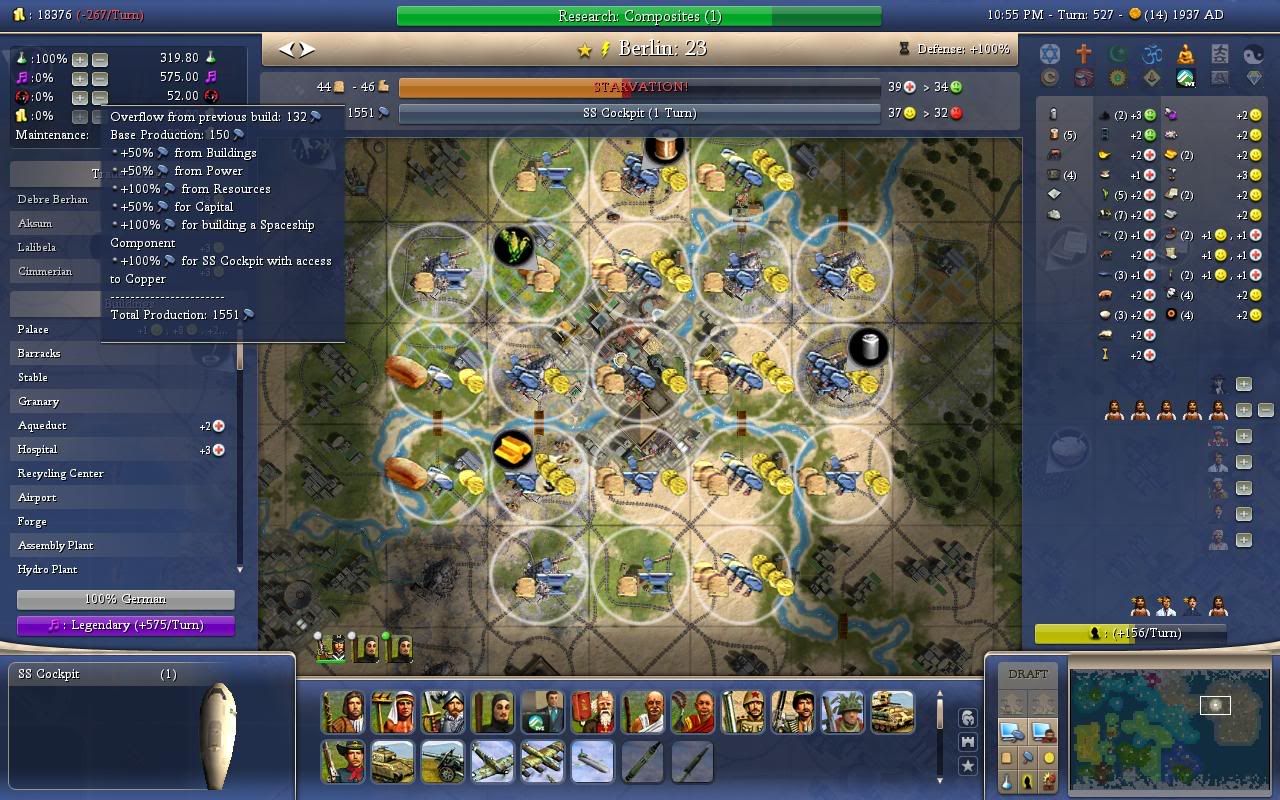BTW, I'm not so sure using a GS to make FOUR academys is a wise move. There was an interesting thread about 2 years ago or so, where it was debated back and forth. Eventually everyone came to the agreement that it's always best to build just ONE academy, then attach all other GS into that city to maximize the other 3.
Barring some very weird cases, such as a very rich city, you should not be making more than one academy. Now, maybe your shrine was pulling in a lot of cash, and made it possibly viable here. But that is a catch-22, as you should know by now that wasting a GP on a shrine is hardly ever worth it

I hope that Shrine suggestion was a joke. I see the

, but people get some funny ideas here...
I just captured the holy city of the "other" major world religion and I spent a Great Priest to build the shrine since that civ apparently never got a Great Priest. I'm now picking up another 65 gold per turn in a city that never built a market, Apothecary or a Bank. I'm going to get busy on those buildings right now.

Also, the Academy or Settle debate came down to a couple of different scenarios:
1) Representation: Great Scientists produce 9

and 1

per turn under representation. That's 29.5

with a Library, University, Observatory, Academy and Oxford University (no Labratory since that' only very late game). In order for a city to get an extra 29.5

from an Academy, it would need to be consistantly producing a base of 59
 BEFORE BONUSES
BEFORE BONUSES. This is certainly not common, but it's also not unheard of. If you have a second city that is producing more than 59

, then it's probably worth an Academy in that second city.
For some reason, I remember the "break even" number as 63, but I believe that includes a Research Lab and I don't think that's a resonable comparison since so very much of the game is over before Research Labs and I expect that a Lightbulb would be more worthwhile by the time that the building is available.
2) No Representation: Great Scientists now produce only 6

per turn with 1

. That means the Oxford city gets only 19.5

per turn and a second academy is more profitable than settling the Great Scientist if you get more than 39

from a city (again, before bonuses). That means a second, third and even fourth Academy is going to be the best long term option fairly often in a Cottage Economy, especially if you have a food corporation.
Now, if it is relatively late in your game, then a Lightbulb will be your best option
if you actually want the technology that you would get with the lightbulb. When I say relatively late, I mean late in that particular game. If it's 1000 BC, buit you're going to win the game in 5 turns, then it's very late in your game.
Take the number of

that you'll get from the lightbulb. Divide by the numbe of

that you'll get from settling the scientist or from building an academy. That result is the number of turns it will take for you to catch up to the lightbulb with your settled GS or Academy.
If the number of turns is greater than the number of turns you're going to play, then the lightbulb is obviously a better option (again, if you like the tech that the lightbulb will fetch.
If the number of turns is significantly lower than the number of turns that you're going continue playing that game, then you have to weigh the long term benefits of the extra science you'll get from the settled GS vs. the long term benefits you'll get from getting the tech earlier than later. This is particularly significant for religious techs and military techs where getting the tech a few turns earlier can be leveraged into a significant long term advantage for the entire game. I'm not advocating reckless lightbulbs, but I do believe that Great People are such significant resources that a careful consideration of all of your options is worthwhile, even if you "don't believe in lightbulbing" or some such.


 roduction: per turn, +3
roduction: per turn, +3 per turn.
per turn. in one city.
in one city. and +5 raw $$ per turn.
and +5 raw $$ per turn.
 ) has made the game completely different!
) has made the game completely different! 

 per turn under representation. That's 29.5
per turn under representation. That's 29.5